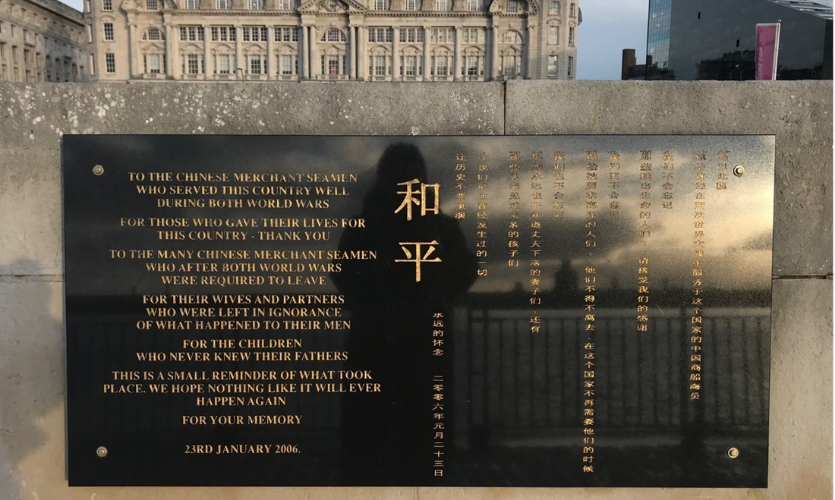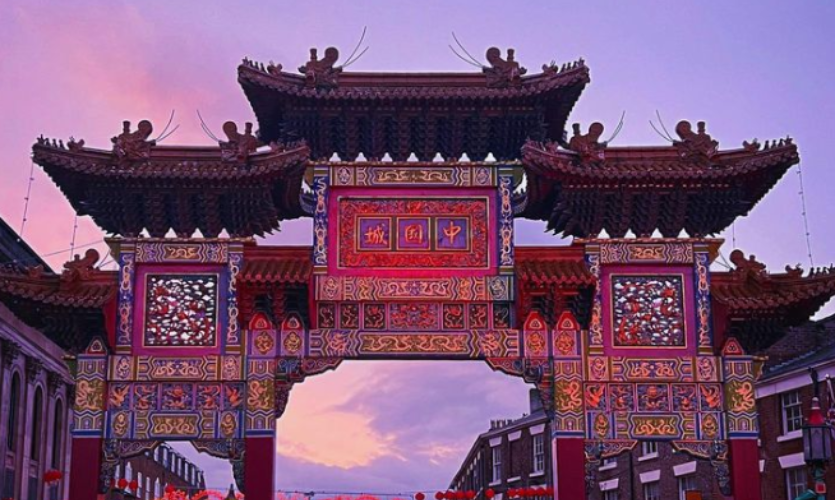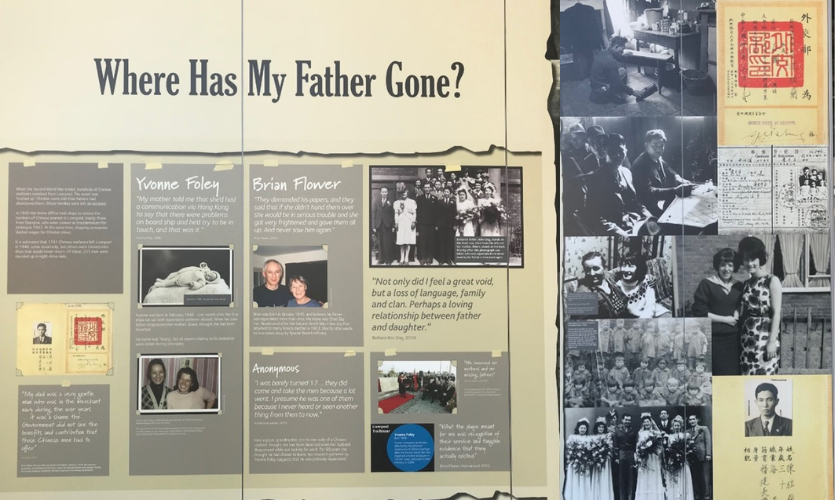Liverpool's history with the Chinese community
Pictured: 1.Chinatown Liverpool, 2.Where Has my Father Gone? Exhibition, Museum of Liverpool,3. Seamen Memorial installed on 26 January 2006 at the Pier Head
During this Lunar New Year period, it is important to recognise that the Chinese community and culture is much more than just a festival (Lunar New Year celebrations lasts for 15 days from 22 January - 9 February).
Beatrice Png is a Chinese Singaporean, former student at LJMU, and now a staff member in the Diversity and Inclusion Team. Here she explains Liverpool’s affiliation to the Chinese community.
What is Liverpool’s affiliation to the Chinese community?
Liverpool’s ties with the Chinese community are strongly intertwined due to Liverpool’s history as a major port. The connecting factor is the shipping enterprise, Alfred Holt & Company and their subsidiary, the Blue Funnel Line, whose cargo ships linked Shanghai, Hong Kong, and Liverpool, importing silk, cotton, and tea. Additionally, waves of Chinese seamen migrating to the UK/Liverpool can be traced to British colonialism, starting with the First Opium War (1839-1842) which led China to yield Hong Kong to the UK, and the expansion of British influence on the mainland. The first presence of Chinese people that arrived in Liverpool in the 1860s were seamen. Moreover, because of the Second World War, an estimated 20,000 Chinese seamen were recruited from Shanghai, Singapore, and Hong Kong (countries with ties to the British Colonial Rule) into the British Merchant Navy and they were mostly stationed at Liverpool. Some set up roots in Liverpool, marrying and cohabiting (some chose not to marry because the woman could lose her British citizenship and benefits) with local women, starting families, and establishing businesses that catered to seamen on shore (boarding houses, grocery and laundry shops, Chinese restaurants, and takeaways, etc.)
Although the Chinese seamen were instrumental during Britain’s warfare, there was a pay disparity between them and their British counterparts. Demands for equal pay and treatment led to striking action in 1942, which saw them being labelled as instigators. Riddled with feelings of resentment (stirred up by media representation) and xenophobia, the shipping companies and government conspired to utilise “the usual steps for getting rid of foreign seamen whose presence here is unwelcome” after the war. (The “usual steps” might have been referring to an earlier mass deportation of 95,000 Chinese men that were recruited in the First World War).
This resulted in the operation of ‘compulsory repatriation of undesirable Chinese seamen at Liverpool’ by the Home Office in October 1945. Chinese men were forcibly rounded up, taken off the streets and brought on to ships with a one-way passage to either Saigon, Singapore, China, or Hong Kong. The forced deportation of Chinese men meant that women and mixed-race children were left behind, with no indication as to what ensued. With the Home Office sworn to secrecy and the families left behind being kept in the dark; the histories would have been unfounded if not for the BBC Northwest documentary titled Shanghai’d (2002) — the catalyst for unravelling what truly happened to the Chinese seamen.
If you want to learn more about the Chinese connection to Liverpool, our equality team has compiled the resources below:
- Kim Johnson’s motion about the Forced Repatriation of Chinese Seamen from Liverpool After
World War Two – in the House of Commons at 8:11 pm on 21st July 2021. - Liverpool’s lost Chinese sailors
- The secret betrayal: How the UK ejected the Chinese sailors who had risked their lives





